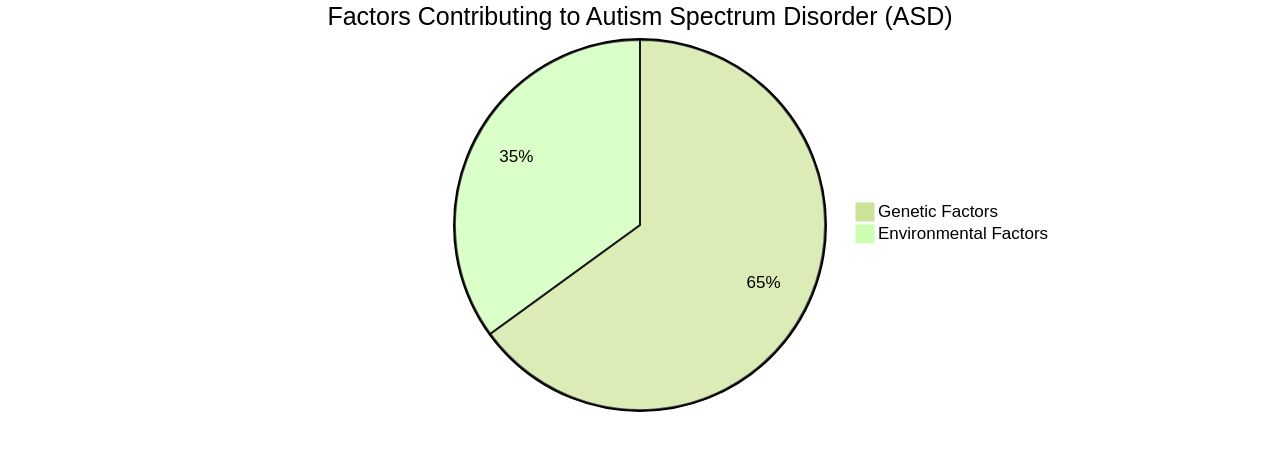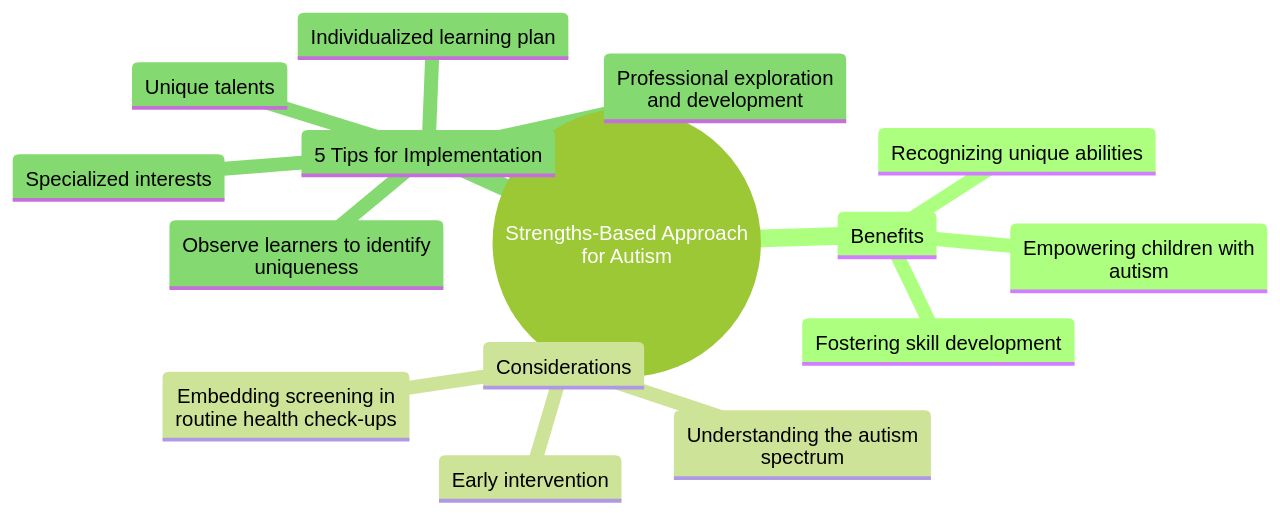Introduction
Understanding Autism Assessment: Navigating the Path to Support and Empowerment
Understanding the sensory needs of children on the autism spectrum is a multifaceted journey. Autism assessments play a vital role in identifying the unique strengths and challenges faced by these individuals.
With the prevalence of autism rising, early diagnosis and subsequent support are more important than ever. In this article, we will explore the assessment process, the diagnostic evaluation, strategies for a successful assessment, preparing for the assessment, and understanding assessment results. Join us as we empower Parent Advocates with guidance and resources to navigate the world of autism assessments and ensure the well-being of their children.
Understanding Autism Assessment
Understanding the sensory needs of children on the autism spectrum is a multifaceted journey. Autism assessments are essential for identifying the unique strengths and challenges faced by these individuals.
With the prevalence of autism rising to 1 in every 36 children, according to the latest CDC research, the importance of early diagnosis and subsequent support has never been clearer. Autism is a neurodevelopmental condition with genetic links, and while no single cause has been pinpointed, brain scans have revealed structural differences in those with autism.
Misconceptions, such as the unfounded link between vaccines and autism, have been dispelled, underscoring the need for accurate information and awareness. The assessment process is not just about diagnosis; it's about understanding each individual's specific needs.
It's crucial that professionals skilled in evaluating communication, behavior, and development are involved. The DSM-5 criteria state that core features of autism are present in early childhood, but symptoms may not fully emerge until later when social demands exceed coping capacities.
This can lead to a significant backlog in assessments, as evidenced by the staggering 172,022 open referrals for suspected autism in England as of December 2023. Early intervention is key, and children diagnosed by age 4 are fifty times more likely to receive the necessary services. However, disparities persist, with children of color often diagnosed later than white children, highlighting the need for equitable access to healthcare services. Boys are approximately four times more likely to be diagnosed than girls, but this may be due to differences in how autism presents across genders. As we strive to support those on the spectrum, it's crucial to not only focus on challenges but also to recognize and nurture their inherent strengths, such as a strong sense of justice, attention to detail, and deep expertise in particular subjects.

The Diagnostic Evaluation Process
Navigating the journey to an autism spectrum disorder (ASD) diagnosis can be intricate and deeply personal. Clinicians use the DSM-5 as a guide to diagnose ASD, focusing on the core features that typically present in early childhood.
However, for some children, symptoms may become more apparent as social demands increase. The assessment process is comprehensive, beginning with an evaluation of the child's developmental history and observing their communication, behavior, and developmental levels.
It is a multifaceted approach that can involve brain scans to reveal structural differences, with experts discounting outdated theories that vaccines or parenting styles cause autism. Instead, they highlight the genetic and environmental factors that contribute to ASD.
The process can be challenging and is often exacerbated by barriers such as cost, insurance coverage, and finding professionals adept at evaluating adults with autism. With rising ASD prevalence rates—now affecting 1 in 36 children—early diagnosis is imperative, as it can be fifty times more likely for children diagnosed by age 4 to receive essential services. Early intervention can lead to optimal outcomes, yet only 10-20% of those diagnosed before age 5 are able to live independently as adults. Understanding each child's unique strengths and challenges is key to providing tailored interventions, such as helping a child who struggles with emotion regulation. With the right support, the journey towards understanding and managing ASD can lead to a better quality of life for individuals and their families.

Preparing for the Assessment
Embarking on an autism assessment can be a pivotal step in understanding your child's unique needs. The pathway to this assessment should be navigated with care, ensuring that each individual's distinct characteristics are considered. A Board Certified Behavior Analyst (BCBA) tailors the evaluation to the child, setting specific, measurable goals based on a thorough intake and assessment.
This personalized approach is vital, as no two children with autism are the same; the condition's genetic complexity and the diverse ways it manifests make each case unique. In fact, brain scans have revealed that individuals with autism have distinct differences in brain structure when compared to neurotypical development, underscoring the need for individualized assessment plans. In preparing for an assessment, it's crucial to gather comprehensive information about your child, including any hereditary patterns of autism or related disabilities within the family.
As the assessment unfolds, maintaining open communication with therapists is essential to align on goals and ensure that everyone involved is contributing to a supportive environment for your child. This collaboration can fuel progress and bring hope to families, as encapsulated in the poignant words, "Every day brings a new beginning and a new ending." The urgency of these assessments cannot be overstated, given the staggering statistics indicating a backlog of 172,022 patients awaiting autism evaluations in England as of December 2023.
This bottleneck underscores the importance of timely and efficient assessment processes. The government has recognized this need, allocating £4.2 million to enhance autism services for children and young people, including assessment services. As we move forward, the shared goal is to reduce the current two-year delay from initial screening to diagnosis, enabling earlier access to the interventions that can significantly improve outcomes.
Strategies for a Successful Assessment
Embarking on the journey of an autism assessment can be a complex process, but embracing a strengths-based approach can significantly enhance the experience for both children and their advocates. Recognizing the unique abilities of children with autism, such as excellent memory, developed visual thinking, and attention to detail, can empower them to reach their fullest potential.
In line with Autism Awareness Month, we focus on embracing these strengths and offer guidance for a positive and effective evaluation. Early intervention is crucial, especially during the preschool years, to improve mental health and functioning.
It is essential to understand the child's specific strengths and challenges to tailor interventions that can foster skill development. For instance, if emotional regulation is a struggle, targeted treatment can provide the child with strategies to gain better control over emotions and behaviors.
It is also vital to educate oneself about autism and its spectrum to foster compassion and understanding. According to recent research, embedding early autism screening in routine health check-ups can have a profound impact, allowing for early identification and connection to support services. This proactive approach can help mitigate symptoms and support development. By working closely with healthcare providers and embracing a personalized approach to the assessment process, advocates can ensure that the child's needs are met and their inherent strengths are highlighted.

Understanding Assessment Results
Navigating the intricate world of sensory needs can be a daunting task for parents, especially when they are presented with a complex assessment report. Understanding this report is essential, as it provides a comprehensive view of a child's unique strengths, challenges, and the recommended strategies for support.
It is imperative to recognize that assessments are not just one-off occurrences but should be part of an ongoing, multi-faceted approach. This includes both standardized assessments, which offer a broad view but can be inflexible, and informal assessments that allow for continuous monitoring of a child's progress throughout the year.
The report you receive is not just a collection of data but a crucial tool that can bridge the gap between where your child is and where they need to be. It can guide you in advocating for necessary interventions and in accessing the most suitable services and resources.
With almost 1 in 5 children facing mental health or behavioral disorders, it's crucial to interpret the assessment through a lens that considers the child's environment and how it supports their sensory needs. Moreover, the assessment results must be viewed in light of the wider system that can disadvantage families, as highlighted by recent studies of autistic mothers. These findings underscore the importance of a strength-based understanding of autism and other complex needs, rather than a deficit-based one. By embracing this perspective, parent advocates can ensure that the unique abilities of their child are recognized and fostered, leading to more positive and supportive experiences for both the child and the family.
Conclusion
In conclusion, understanding autism assessments is crucial for Parent Advocates in navigating the path to support and empower their children on the autism spectrum. Early diagnosis and subsequent intervention are key, as they significantly improve outcomes and access to necessary services.
It is important to recognize and nurture the unique strengths of individuals with autism while understanding their specific challenges. The assessment process involves evaluating communication, behavior, and development, with professionals skilled in these areas playing a vital role.
It is essential to address disparities in diagnosis, such as delayed diagnoses for children of color and differences in how autism presents across genders. By focusing on each child's individual needs, tailored interventions can be provided to support their well-being.
Preparing for an assessment requires gathering comprehensive information about your child and maintaining open communication with therapists. The urgency of assessments cannot be overstated, and efforts are being made to reduce delays and enhance autism services.
Embracing a strengths-based approach can significantly enhance the assessment experience by recognizing and empowering the unique abilities of children with autism. Understanding assessment results is crucial for Parent Advocates in advocating for necessary interventions and accessing suitable resources. Assessments should be viewed as part of an ongoing, multi-faceted approach that considers the child's environment and supports their sensory needs. By embracing a strength-based understanding of autism, parent advocates can ensure that their child's unique abilities are recognized and fostered. Overall, by navigating the world of autism assessments with guidance and resources, Parent Advocates can support their children's well-being and empower them to reach their fullest potential.




